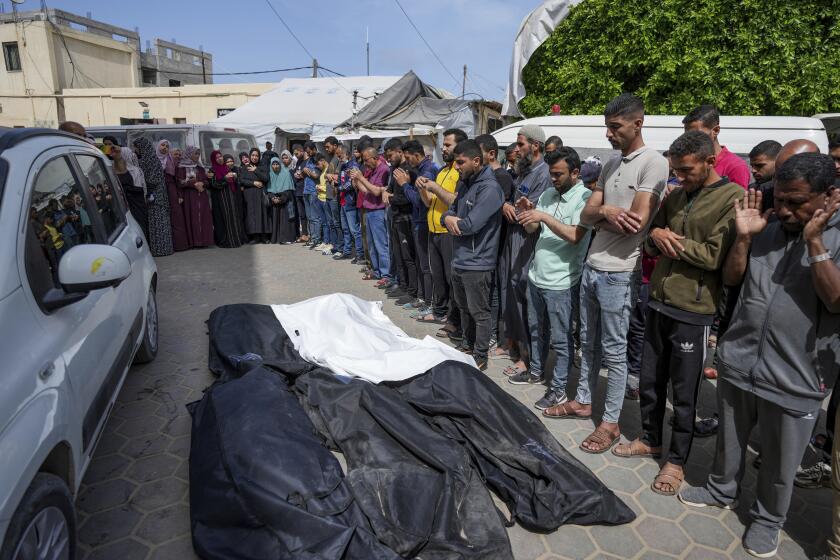Industry takes heat
Three men with ash-smeared faces worked their way along a dirt road in the smoldering wake of the Gray’s Creek fire.
They scrambled down embankments to shovel dirt onto hot spots. They doused flare-ups with water from a tank on their retrofitted pickup. They used chainsaws to chop up the corpses of burned trees lying in the road.
The Blaze Runners engine crew out of Nampa, Idaho, is part of the private army of wildland firefighters that has sprung up to take on what was once exclusively government work.
The contract firefighter industry was born in the Pacific Northwest in the late 1980s. As logging declined on federal lands -- and with it the number of U.S. Forest Service timber workers available to fight fires -- forestry companies started providing 20-member fire crews for hire.
Last year, 164 such teams were registered with the Oregon Department of Forestry -- up from 62 in 1994. The state oversees the bulk of private crews, which are dispatched to wildfires all over the West.
An additional 37 crews are under contract with the Forest Service.
The agency also hires smaller engine crews, such as the Blaze Runners team that worked the Gray’s Creek fire last September for $1,984 a day.
As the number of contract firefighters has grown, so have complaints about their performance.
Dave Kohut, a fire management officer for the Forest Service, worked with private crews before retiring in 2004.
“They weren’t well-trained. They weren’t well-equipped,” he recalled. “Little or no fire experience. They didn’t have the physical stamina.”
A 2006 audit by the U.S. Department of Agriculture’s inspector-general found that fire contractors had placed crew members in positions they weren’t qualified for, hired undocumented workers and assigned supervisors who couldn’t communicate with commanders because they didn’t speak English.
Last year, the Oregon labor commissioner fined a contractor more than $50,000 and revoked its license after finding that the firm had falsified training records and sent a teenager to at least 35 wildfires as a crew boss even though he had never completed basic firefighting classes.
Complaints prompted Oregon to step up crew monitoring and toughen standards.
“What I’m seeing and hearing is the equipment is better, their training and physical ability to do the job have improved 100-fold,” said Bill Molumby, an incident commander with the U.S. Fish & Wildlife Service.
Contractors say their business has made strides. “I would say today the industry is very professional,” said Debbie Miley, executive director of the National Wildfire Suppression Assn., which represents more than 200 contractors. “We have really worked hard to raise the bar.”
In California, Forest Service officials have chosen to use comparatively few private crews because of the industry’s history of problems. But on some blazes in the Pacific Northwest, federal fire commanders say as much as 90% of the crews and equipment are private.
That affects how fires are fought.
“You’re not going to be as aggressive,” said Howard Carlson, a retired Forest Service incident commander. “Contractors come and go. You don’t know who they are.”
He recalled a 2002 Oregon forest fire burning in steep, dangerous terrain. “We had to back off” from a direct attack, he said, “because we didn’t have the personnel we felt were up to the challenge.”
As a result, he said, it probably took longer to contain the blaze.
--
julie.cart@latimes.com
More to Read
Start your day right
Sign up for Essential California for news, features and recommendations from the L.A. Times and beyond in your inbox six days a week.
You may occasionally receive promotional content from the Los Angeles Times.







